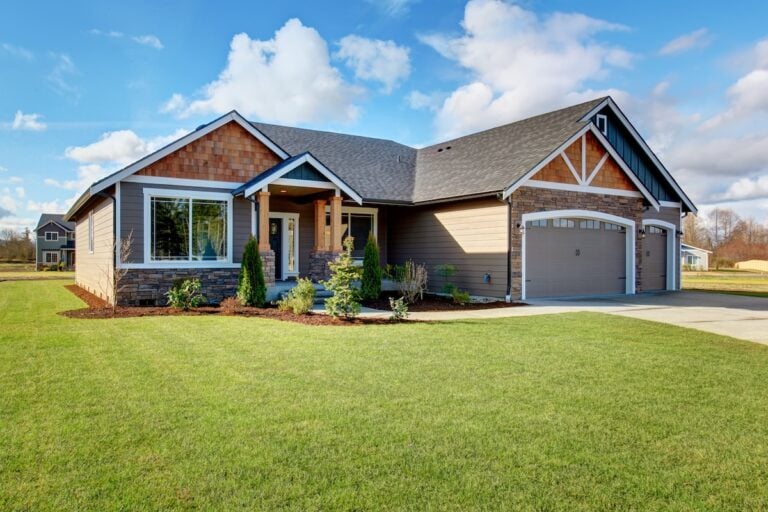
6 Min Read

A sturdy roof is not just an architectural feature; it’s the very linchpin of your home’s structural integrity, safeguarding you and your family from the elements. But a time will come when that reliable protectant of your home will need a little help, and that’s where a new roof steps in. The process of replacing a roof is a critical one, involving financial outlay, material choice, and implementation. It’s a venture that affords no shortcuts or corners to be cut, as the choice you make will impact the comfort and safety of your household for years to come.
Inside This Blog:
This comprehensive guide is tailored to homeowners who are considering or planning for a roof replacement. To ensure your roof financing and replacement experience is as smooth as fresh shingles after a rainfall, we’ll walk through each step. From the initial evaluation to the last nail driven into place, your understanding of this process will be as sound as the roof over your head.
The longevity of your roof is a concert of various factors, including the initial installation quality, the type of materials used, and the weather conditions your home faces. The average lifespan of a roof can vary widely, with asphalt shingles usually lasting between 15-30 years, wood shingles around 20-25 years, and metal or slate roofs often surpassing 50 years.
Yet, not all roofs will last as long as they’re designed to. Weather events, like hurricanes or heavy snow, can shorten a roof’s life expectancy dramatically. Signs that your roof may need a replacement include:
Assessing these signs in conjunction with your roof’s age is the first step to understanding if a new roof is in your near future.
The material you choose for your new roof isn’t just about aesthetics; it’s a practical, long-term investment. Here’s a rundown of popular roofing materials, each with its benefits and costs:
Asphalt Shingles:
Metal Roofing:
Slate Roofing:
Wooden Shakes & Shingles:
Tile Roofing:
Each homeowner’s needs are unique, which is why understanding your priorities, budget, and home requirements is crucial when selecting the right material. Don’t rush this decision; the material you choose will have financial implications for years down the line.
Investing in a new roof is investing in your home’s future. But how can you manage such a significant cost? Here are popular financing options for your new roof:
Using Your Savings:
Personal Loans:
Credit Cards:
Home Equity Loans:
Home Equity Line of Credit (HELOC):
Choosing the right financing option is as crucial as choosing your roofing material. Consider factors such as interest rates, repayment terms, and the impact on your home equity. The goal is to find a solution that fits your financial landscape without compromising your home investment.
Once you’ve made the decision to replace your roof and have the financials in place, the next step is finding a reputable contractor. Here’s how to find the right one:

Your new roof is an asset to your home, and just as with any investment, maintenance is key to its longevity. Here are some tips to keep your roof in top shape:
By staying on top of maintenance, you can extend the life of your roof and minimize the need for repairs.
Getting a new roof is a significant investment, but it’s one that pays dividends in the longevity and value of your home. By following these steps – evaluating your need, choosing the right material, understanding your financing options, finding the best contractor, and maintaining your investment – you can ensure your new roof is a source of comfort and protection for decades.
Remember, your home is more than a building; it’s a sanctuary. Every sanctuary deserves a steadfast shield against the elements. For further assistance in your roofing needs, feel free to reach out to us at Kingfisher Roofing.